A WOMAN ALPINIST IN THE SCIENTIFIC-MOUNTAINEERING EXPEDITION "GREENLAND '76"
Laura Fusi

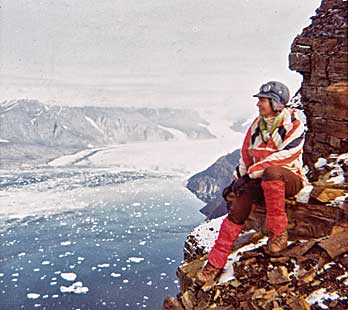 In July 1975 my husband, Clemente Maffei – a mountain guide – was taking part in a mountaineering expedition in the Karakorum, the Pakistani Himalaya, to which I had not been admitted as a woman, although an experienced climber... then I decided to fly to Scandinavia. The first stops were in Copenhagen and Stockholm, and the following in Kiruna, beyond the Arctic Circle - where I could join a group of explorers who were visiting the Swedish, Norwegian and Finnish Laplands. At the famous and wild North Cape we could admire the midnight sun from the steep cliff on the Arctic Ocean! From the northernmost point in Europe, we moved to the small harbor of Honnisvåg and, on board an ice-breaker ship, we reached the Spizbergen/Svalbard islands. I felt quite enthusiast of my discovery trip in the "Land of Light": at those latitudes the sun never sets, especially in June and July. I got to know many interesting elements of the Sami culture (Lapps), an ethnic group of nearly 75,000 people who still survive by fishing, hunting and breeding reindeers. I was particularly fascinated by their ancient religious traditions, based on the shamanism. According to the religious Sami culture, every living being has a soul which, at his death, separates from the body in order to be born again. Closely interacting with nature, this people have always had a deep respect for it. In July 1975 my husband, Clemente Maffei – a mountain guide – was taking part in a mountaineering expedition in the Karakorum, the Pakistani Himalaya, to which I had not been admitted as a woman, although an experienced climber... then I decided to fly to Scandinavia. The first stops were in Copenhagen and Stockholm, and the following in Kiruna, beyond the Arctic Circle - where I could join a group of explorers who were visiting the Swedish, Norwegian and Finnish Laplands. At the famous and wild North Cape we could admire the midnight sun from the steep cliff on the Arctic Ocean! From the northernmost point in Europe, we moved to the small harbor of Honnisvåg and, on board an ice-breaker ship, we reached the Spizbergen/Svalbard islands. I felt quite enthusiast of my discovery trip in the "Land of Light": at those latitudes the sun never sets, especially in June and July. I got to know many interesting elements of the Sami culture (Lapps), an ethnic group of nearly 75,000 people who still survive by fishing, hunting and breeding reindeers. I was particularly fascinated by their ancient religious traditions, based on the shamanism. According to the religious Sami culture, every living being has a soul which, at his death, separates from the body in order to be born again. Closely interacting with nature, this people have always had a deep respect for it.
 When my husband came back from his expedition to Himalaya, he was attracted by the description of the sublime landscapes of the Great North and from my report from the Laplands he had the idea to organize an expedition to Greenland, in which, exceptionally, I would have taken part too! Hence we started to plan the scientific and alpinistic expedition "Greenland '76". We left on the 4th of July 1976, to reach the west coast of Greenland: 20 climbers and me, the only rock climber woman! I had finally succeeded in overcoming the old “machismo” of the mountaineering world! When my husband came back from his expedition to Himalaya, he was attracted by the description of the sublime landscapes of the Great North and from my report from the Laplands he had the idea to organize an expedition to Greenland, in which, exceptionally, I would have taken part too! Hence we started to plan the scientific and alpinistic expedition "Greenland '76". We left on the 4th of July 1976, to reach the west coast of Greenland: 20 climbers and me, the only rock climber woman! I had finally succeeded in overcoming the old “machismo” of the mountaineering world!
The expedition had several goals, such as the exploration of unnamed mountains and glaciers and the management of scientific studies in different fields: geology (with rocks sampling), cartography, chemistry, physics and human physiology.
From Copenhagen a special flight took us to the Danish-American military base at Strǿmfjord. From Strǿmfjord we flew by military helicopters to the small village of Umanak, inhabited by a thousand people and by 4000 sled dogs! At Umanak we hired two icebreaker-ships, which transferred us to the peninsula called Akuliaruseq, at the foot of the extensive glacier Jhoannes Brae, where we installed the base camp of our expedition.
We split into different groups, so that we could carry out ascents and explorations simultaneously. I personally took part in various missions: the first, with my husband, was the longest and most challenging one. Our first crew included five climbers; we set up a camp at high altitude from which, the following day, we crossed a wide glacier, with many deep crevasses full of water. After several hours walking, the northern wall of a top-rounded mountain appeared in front of us: the Dôme Blanc. The wall was covered by huge and dangerous seracs but thanks to Clemente’s high technical climbing skills, we succeeded in reaching the summit, at an altitude of 1980 meters, opening a new climbing route.
 The following day, my husband, Professor Enrico Bellotti and I went to the bottom of a vertical wall of medium climbing difficulty. The wall, facing the South, was dry but somewhere brittle. At a certain point of the ascent Clement warned us that a stone was falling towards us: I heard it bouncing on the wall and I tried to adhere to it, holding my breath and I saw it flying over me. I closed my eyes and I heard a rap at the bottom of my back. Notwithstanding this accident, we managed to climb to the summit, which was named "Pinzolo Peak”. The following day, my husband, Professor Enrico Bellotti and I went to the bottom of a vertical wall of medium climbing difficulty. The wall, facing the South, was dry but somewhere brittle. At a certain point of the ascent Clement warned us that a stone was falling towards us: I heard it bouncing on the wall and I tried to adhere to it, holding my breath and I saw it flying over me. I closed my eyes and I heard a rap at the bottom of my back. Notwithstanding this accident, we managed to climb to the summit, which was named "Pinzolo Peak”.
Returned to our base camp, I realized that I could not do anything but rest for a few days. My short convalescence did not prevent me to go to a cove where an Inuit family every night landed aboard a small boat and a white kayak. On the rocks smoothed by the sea the little family used to skin a seal for dinner. Each part of the animal was used: the softest organic parts like eyes, liver, spleen were given to children, women and guests. The fur was tanned with salt and folded to make clothing.
According to the ancient Inuit culture, every human being has a soul which, after death, reaches the hereafter: the aurora borealis is considered the dance of the spirits of the dead who, according to their tradition, follow the rhythm of the purest hearts.
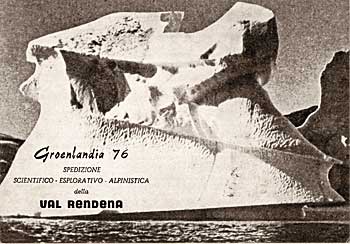 After two days of rest at the base camp, I shared a further excursion with three other climbers. Our goal was the highest mountain in the region, without a name. We left with a wonderful weather, crossing glaciers and moraines. From sea level we climbed up to 1,400 m altitude, where we set the tent for the night. For the first time since we were in Greenland, the darkness seemed to fall, as the sun was hidden by clouds and soon it started to snow. At 2:00 a.m. the snow stopped and hence we formed our roped party to climb on rocks and ice, trying to proceed quickly because the weather was getting worse and the snow had already hidden many dangerous crevasses. Once arrived at the eastern ridge of the mountain, we decided to climb along it in order to get to the top. At 10:00 am we reached the summit, at an altitude of 2,180 m, performing the “première” climbing route, with 40 cm of fresh snow! We decided to call that mountain: "Setaurense Peak”. After two days of rest at the base camp, I shared a further excursion with three other climbers. Our goal was the highest mountain in the region, without a name. We left with a wonderful weather, crossing glaciers and moraines. From sea level we climbed up to 1,400 m altitude, where we set the tent for the night. For the first time since we were in Greenland, the darkness seemed to fall, as the sun was hidden by clouds and soon it started to snow. At 2:00 a.m. the snow stopped and hence we formed our roped party to climb on rocks and ice, trying to proceed quickly because the weather was getting worse and the snow had already hidden many dangerous crevasses. Once arrived at the eastern ridge of the mountain, we decided to climb along it in order to get to the top. At 10:00 am we reached the summit, at an altitude of 2,180 m, performing the “première” climbing route, with 40 cm of fresh snow! We decided to call that mountain: "Setaurense Peak”.
During my last ascent in Greenland - to the summit of an unnamed mountain that we called "Rendena Peak" - together with my husband, I had the chance to enjoy for the first time the magnificent spectacle of the aurora borealis: the sky was shining with multicolored lights, assuming various forms and so creating amazing visual effects while in the sea the icebergs glowed pink and gold, lit by the “fires” of the sun ...
The phenomenon of the “northern lights” is actually due to the intense magnetic fields of 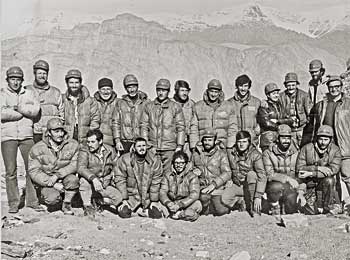 the sun which, releasing energy, enter atomic particles into the space, ionizing the upper layers of the atmosphere and producing the phenomenon precisely Galileo called Aurora Borealis (Arctic) or Australis (Antarctica). the sun which, releasing energy, enter atomic particles into the space, ionizing the upper layers of the atmosphere and producing the phenomenon precisely Galileo called Aurora Borealis (Arctic) or Australis (Antarctica).
Our exploration was at the end: quite a unique human and mountaineering experience, which allowed us to achieve both our scientific and sportive objectives.
|
 NUMBER 10
NUMBER 10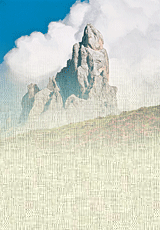
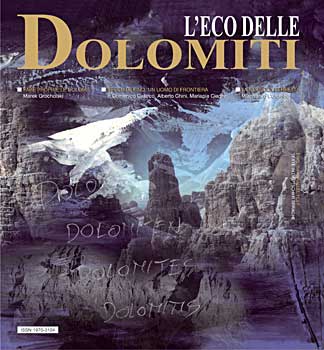
 NUMBER 10
NUMBER 10
